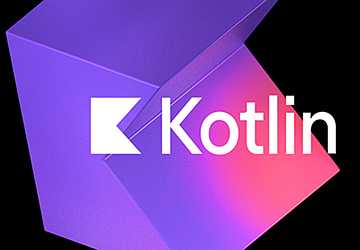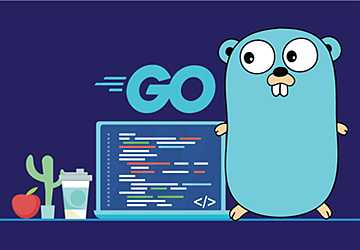8 Programming Languages of 2023 for Career Prospects
Ever wonder which skill can propel you ahead in the ever-evolving tech industry? Feel that weight of uncertainty holding you down?
With the constant innovation and shifts in technology, it's common for professionals and aspiring coders to feel lost in the ocean of options.
We've all been there, and we understand that navigation through the vast sea of tech can be challenging.
That's why this article is written especially for you. Read this article to discover the eight best programming languages to learn in 2023 and take your career to soaring heights.
Let's dive into it!
The Power of Modern Programming
In this digital age, mastering the right programming languages can be the key to unlocking prestigious job opportunities and commanding high salaries.
It's more than just writing code; it's about building the future. So, which languages should be on your radar this year?
1. Rust
Rust, with its promise of speed and reliability, is rapidly gaining attention in the tech world. How can Rust elevate your career?
Rust ensures memory safety without sacrificing speed. This means fewer crashes and more efficient programs. With a community that's passionate and welcoming, diving into Rust can feel like joining a tight-knit family.
It might have a steeper learning curve for some, but the rewards are worth it.
Rust's Key Features:
● Zero-cost abstractions.
● Concurrency without fear.
● Rich library ecosystem.
Rust, with its growing demand in industries, can be a game-changer for your career.

2. Kotlin
Kotlin has emerged as the darling of Android app developers. What makes it a must-learn?
Kotlin simplifies many of Java's complexities, making app development faster and more efficient. It seamlessly works with Java, allowing smooth transition and utilization of existing codes.
While Kotlin is primarily for Android, its versatility means it can be used for web and desktop applications, too.
Kotlin’s Key Features:
● Extension functions.
● Smart casts.
● Null safety.
Kotlin is indispensable for modern Android developers, ensuring a competitive edge.
3. Python
A versatile beast, Python continues its dominance. Why should you hop on the Python train?
From AI to web development, Python's applications are vast. Its syntax is clean, making it an excellent starting point.
Engage in Python's vast community. Take on mini-projects. Python's growth means that staying updated with its libraries is essential.
Kotlin’s Key Features:
● Dynamic typing.
● Broad standard library.
● Platform independence.
Python's ubiquity makes it a safe and fruitful investment for future-proofing your career.
4. TypeScript
A superset of JavaScript, TypeScript is about making large codebases more manageable. How does TypeScript stand out?
It adds optional static typing, making debugging easier. Works perfectly with modern JavaScript libraries.
Start with the TypeScript handbook and migrate small JavaScript projects to TypeScript. While TypeScript adds to JavaScript, it requires understanding the latter first.
TypeScript Features:
● Static typing.
● Interfaces.
● Advanced types.
TypeScript provides robustness to JavaScript that many enterprises now seek, increasing its demand in the job market.

5. Go (or Golang)
Developed by Google, Go (or Golang) stands out with its blend of simplicity and power. Its concise syntax eliminates the verbosity found in many languages, yet it competes in efficiency with heavyweights like C and C++.
With built-in concurrency features, a robust standard library, and a vibrant community, Go has positioned itself as a top choice for modern developers.
Particularly suited for microservices architecture, Go offers both newcomers and experts a dynamic platform.
Go’s Key Features:
● Goroutines for concurrency.
● Built-in garbage collection.
● Powerful standard library.
Go's blend of simplicity and power makes it increasingly relevant in today's complex cloud infrastructures.
6. Julia
Julia is making waves in the scientific computing and data analysis sectors. Why should it catch your attention?
Julia was designed from the ground up for mathematical and scientific computation. Julia combines the ease of Python and R with the speed of C++.
Delve into Julia's rich package ecosystem. Collaborate with the scientific computing community. While niche, Julia's rise in data-intensive fields like biology and finance is undeniable.
Julia's Key Features:
● Multiple dispatch programming.
● Built-in package manager.
● Strong metaprogramming.
Julia, with its specialized focus, could be your gateway to fields requiring intense computational capabilities.
7. Swift
Swift, Apple's proprietary programming language, stands as a beacon of efficiency and innovation for developers. Expertly crafted for Apple platforms like iOS, macOS, watchOS, and tvOS, it merges the performance of C++ with Python's ease of use.
Features like Playgrounds in Xcode offer real-time coding feedback, enriching the developer experience. While its roots lie in Apple's ecosystem, Swift's versatility is evident in its growing relevance in server-side development.
Supported by a vibrant Apple Developer Forum, Swift epitomizes the fusion of performance and user-friendliness.
Swift's key features:
● Protocol-oriented programming.
● Powerful error handling.
● Seamless Objective-C interoperability.
If you're eyeing the vast Apple ecosystem, Swift remains the golden key.
8. Dart (with Flutter)
Dart, especially when combined with Flutter, is reshaping mobile app development. Why is Dart the talk of the town?
Dart's synergy with Flutter allows the creation of beautiful natively compiled applications from a single codebase.
Dart offers a plethora of built-in functionalities. Dive into Flutter's rich widget system. Engage in Dart communities online.
Dart, while powerful, is best utilized when paired with Flutter for UI development.
Dart's Noteworthy Features:
● Just-in-time and ahead-of-time compilation.
● Strong typing without the verbosity.
● Concurrency support with isolates.
For those aiming to master cross-platform app development efficiently, Dart with Flutter becomes indispensable.
Conclusion
As we tread into an increasingly digitized future, mastering these programming languages can enhance your professional standing and also open doors to limitless opportunities.
Remember, the digital realm rewards those who continuously learn and adapt. So, which language will you dive into next?
Let's embark on this journey together – the tech world awaits you!